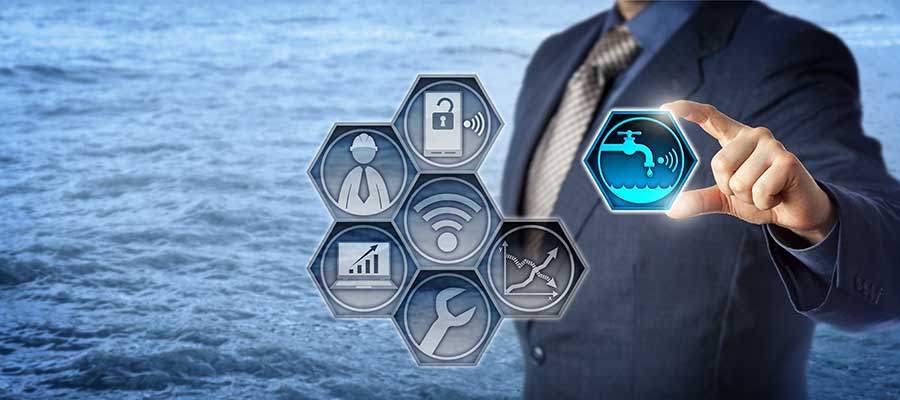
Upgrading to smart water meters or an advanced metering infrastructure is no small investment. Making the change has implications that can last decades, and therefore what must be considered are the benefits and the positive return on investments.
There are many factors to consider from meter efficiency to accuracy and labor savings compared to the current status of the infrastructure. As much as these upgrades will benefit the utilities with better operational management of water usage, it will also significantly improve the lives of the customers and the employees.
We would like to focus on these 3 main advantages of upgrading to an Advanced Metering Infrastructure (AMI) to help you understand the impact of implementing a new system.
- Improved operational control
- Improved customer support
- Sustainability
Putting Your Best Operational Foot Forward
There are 3 main elements that will improve on the operational side, the identification of continuous use cases, improvement of meter inaccuracies, and reduction of non-revenue water. Each of the elements are improved through the Advanced Metering Infrastructure by collecting data.
The data collected allows the operational team to analyze the efficiency of the water usage coming from a particular meter and therefore optimize delivery based on usage patterns. These patterns will help create the use cases and therefore help utilities plan for specific zones or grids.
It is important to note that the collection of this data is automated and therefore eliminates the need for manual data collection from each meter.
The smart water meter along with AMI can track in real time water consumption, flow and pressure anomalies, identify vacancies, and identify tampering all remotely, so the operational team can focus their priorities on dealing with fixing issues before they become larger burdens financially.
One of the main priorities will be to reduce non-revenue water. Utilities will be able to proactively respond to issues based on the real time data received through the network. Depending on the smart water meters being used the utilities can control the water pressure and can dispatch a crew that can identify, repair, and prevent further loss.
Remote Solutions and Support
Adding data collection and analysis with real time monitoring of smart water meters will drastically improve the resolution of customer inquiries. Additionally, service representatives can offer insight into what might be the cause even before a maintenance crew is onsite. While they can look at the current flow of the smart water meters, they would also be able to look back at historical data that could shed light on a recurring issue. Therefore, when a maintenance crew does arrive onsite, they can quickly address the issue rather than trying to figure it out with old fashioned detective work. Even with a few follow up questions over the phone or chat based on the data insight the service rep might be able t o fix the issue directly with the customer and avoid sending out a crew.
Protecting the environment and resource sustainability
While collecting data and helping customers is definitely at the top of the list for utilities to improve, AMI will also provide a boost in efficiency when it comes to protecting our precious water as a resource.
The data can also be used on the side of the customer, so they too can track higher and lower usage times and therefore adjust their water consumption. We’re not just speaking about residential usage, this applies to public, industrial, and agricultural areas that can use this data to increase their water efficiency and set more aggressive conservation targets.
Receiving remote data has one more advantage to the environment, less drivers. There will be less need for a regular visit from a utilities representative to check meters, requiring less travel using cars, directly reducing fuel costs and tailpipe emissions.
Lastly, a new infrastructure with remote access improves the safety and health standards for employees and customers. Catching small leaks before they become larger leaks, reduces damage to building foundations, roads, and homes. It can also prevent unnecessarily exposing employees to extreme weather conditions, prevent vehicle accidents, and potential work injuries.
All these benefits lead to one major important outcome…financial savings. By upgrading to an Advanced Metering Infrastructure, the operations side has more information which allows them to better assess a situation and respond properly and timely. It can offer better and more efficient, safe and reliable customer service and provide long term strategies and forecasts for water consumption. And finally, it can help tackle environmental issues related to water resources and prevent small issues from becoming larger financial and operational burdens.
All of these improvements should make it clear that upgrading to an Advanced Metering Infrastructure will greatly benefit our precious water resource and easily show a positive return on investments.